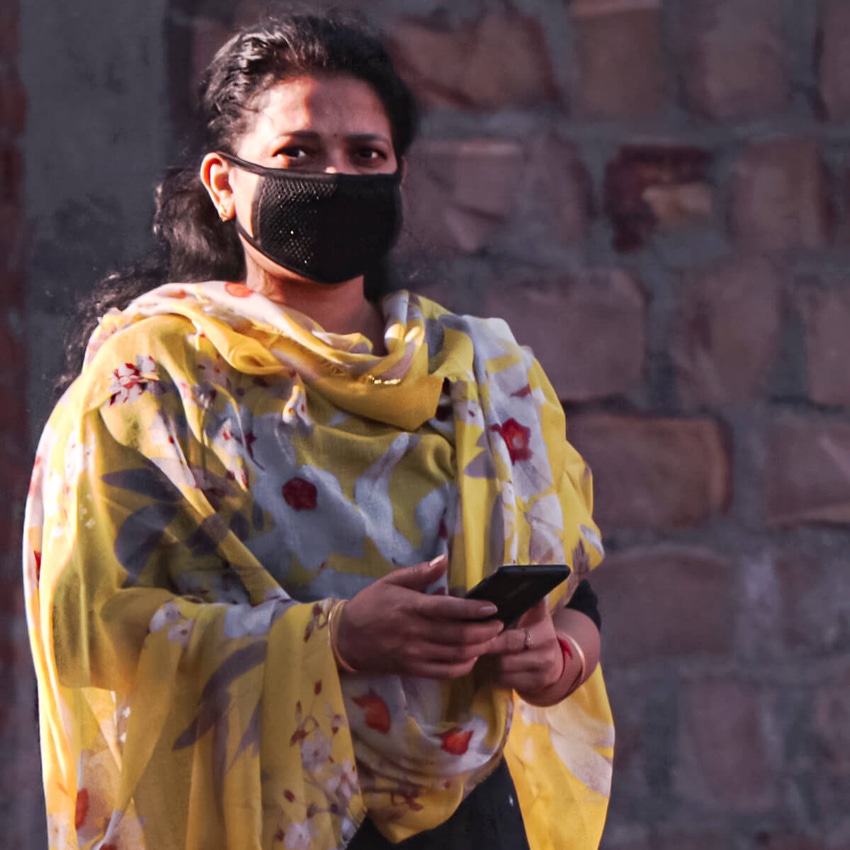Second COVID wave disrupts India's smartphone growth story
The ongoing second wave of the pandemic is likely to have a devastating impact on the smartphone market in the country, according to Counterpoint Research.

The ongoing second wave of COVID-19 is likely to have a devastating impact on the smartphone market in the country, according to Counterpoint Research.
The smartphone segment witnessed a good recovery over the past three quarters; especially March 2021, which registered shipments of 38 million. This made it the best ever first quarter.
Even the feature phone segment reported a 14% year-on-year growth, mainly pumped by the launch of the new JioPhone model. Overall, India's mobile handset market grew by 19% year-on-year in the January-March 2021 quarter.
Figure 1:  Desperate times: India has been badly hit by a devastating second wave of the COVID-19 pandemic.
Desperate times: India has been badly hit by a devastating second wave of the COVID-19 pandemic.
(Source: Divyanshi Verma on Unsplash)
"Continuing with its stellar run, India's smartphone market registered a third consecutive quarter of record shipments in Q1 2021, riding on pent-up demand. Consumer confidence also increased due to the beginning of a vaccination drive in the country," says Prachir Singh, senior research analyst at Counterpoint, in the press statement.
"But these numbers should be taken with caution as a second and more virulent wave of COVID-19 is currently on in the country and is likely to impact the coming quarters. The consumer demand will take a hit due to the ongoing COVID-19 wave and subsequent lockdowns," adds Singh.
India witnessed an unprecedented spike in coronavirus cases in the past month. The country has been recording more than 300,000 cases of COVID-19 for several days now, which has brought economic activity to a standstill. The research agency didn't quantify the impact on the smartphone market.
Measuring market share
The Indian smartphone segment is dominated by Chinese players, with Xiaomi in the lead with a 26% market share in the January-March quarter.
Consolidated Chinese brands hold a 75% market share in the smartphone market. Xiaomi is followed by Samsung, Vivo, Realme and Oppo with 20%, 16%, 11% and 11%, respectively.
Interested in Asia? Check out our dedicated content channel here on Light Reading.
Apple, which has been steadily growing its presence in India in the premium segment (over $400), now has a 48% market share. Itel is the leader in the feature phone segment with a 21% market share.
The second wave of the pandemic might also disrupt supply chain for smartphone manufacturers.
"Regional lockdowns could hamper transport of raw materials and devices due to limited inter-state travel. Hence, for smartphone brands and channels, building up optimum inventory could prove to be a hurdle in the second half of the year," says Sanjay Chaurasia, an analyst at Canalys, in the press note.
Which means the COVID factor coupled with the weakening rupee may also lead to an increase in the price of sub-$200 smartphones.
Related posts:
— Gagandeep Kaur, contributing editor, special to Light Reading
Read more about:
AsiaAbout the Author(s)
You May Also Like












